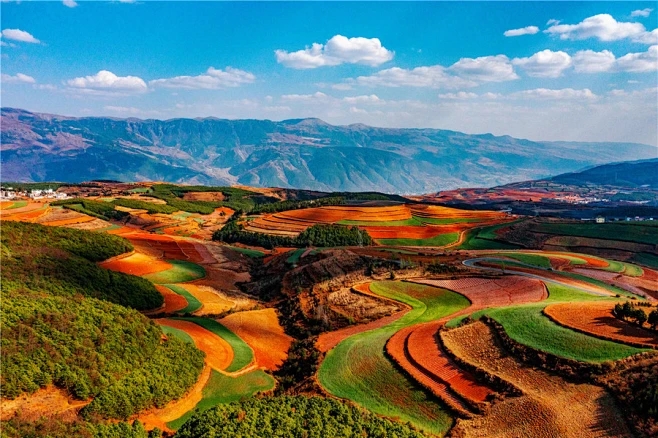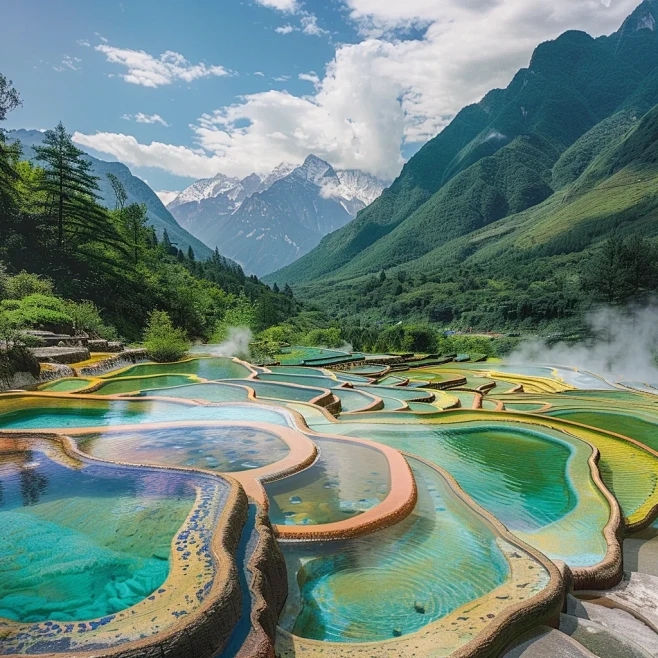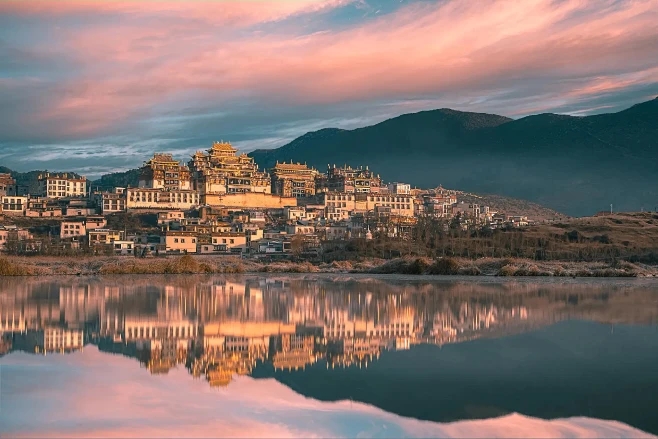Nestled between the towering Himalayas and the lush subtropics, Southwest China is a realm of breathtaking contrasts. Here, snow-capped peaks give way to emerald rice terraces, ancient trade routes whisper tales of caravans, and futuristic cities hum with energy. Whether you’re chasing cultural immersion, adrenaline-fueled adventures, or culinary delights, this region promises unforgettable journeys.
Where to Go: Iconic Destinations
1.Yunnan: The Colorful Frontier
- Dali & Lijiang: Stroll through UNESCO-listed ancient towns where Naxi culture thrives. Spring (March-May) blankets the hillsides in blooming azaleas, while autumn offers crisp air perfect for exploring cobblestone streets.
- Shangri-La: Trek to Tibetan monasteries framed by snow-capped mountains. June-August brings mild weather and vibrant festivals like the Horse Racing Festival.

2.Sichuan: Beyond the Pandas
- Jiuzhaigou Valley: A UNESCO biosphere reserve famed for its turquoise lakes and cascading waterfalls. Visit in September-October to witness fiery autumn foliage.
- Chengdu: Sip tea in bamboo-shaded teahouses, savor tongue-tingling Sichuan hotpot, and meet giant pandas. Spring (April-May) and autumn (September-October) avoid summer’s humidity.

3.Guizhou: Village Time Capsules
- Huangguoshu Waterfall: Asia’s largest waterfall roars at its mightiest during summer rains (July-September).
- Ethnic Villages: Immerse yourself in Miao and Dong cultures. November’s Lusheng Festival features mesmerizing reed-pipe music and intricate silver headdresses.
When to Visit: Seasonal Magic
- Spring (March-May): Ideal for Yunnan’s flower valleys and Guizhou’s golden rapeseed blooms. Mild temperatures and fewer crowds.
- Summer (June-August): Escape to Tibet’s cool highlands or Sichuan’s alpine meadows. Avoid lowland heat in cities like Chongqing.
- Autumn (September-November): Golden rice terraces glow in Yuanyang (Yunnan), while Jiuzhaigou’s forests blaze with color.
- Winter (December-February): Bask in Yunnan’s eternal spring (Kunming’s “City of Eternal Spring”) or soak in Chongqing’s misty hot springs. Skip icy mountain roads in remote areas.

Pro Tips for Travelers
- Altitude Awareness: Acclimatize slowly in Tibet and Sichuan’s highlands (3,000m+). Carry altitude sickness medication.
- Transport Hacks: High-speed trains link Chengdu, Chongqing, and Guiyang. For remote villages, hire a driver or take local buses.
- Cash is Essential: Rural markets, homestays, and small vendors rarely accept cards.
- Spice Diplomacy: Sichuan and Guizhou cuisine is fiery. Politely request “wei la” (mild spice) when ordering.
- Cultural Etiquette: Ask permission before photographing locals, especially in ethnic villages.
Southwest China is a sensory symphony. Let yak butter tea warm your hands in a Tibetan tent, feel the mist of Huangguoshu on your skin, and lose yourself in the drumbeats of a Dong village. This is where adventure begins—not on the map, but in the spaces between.

